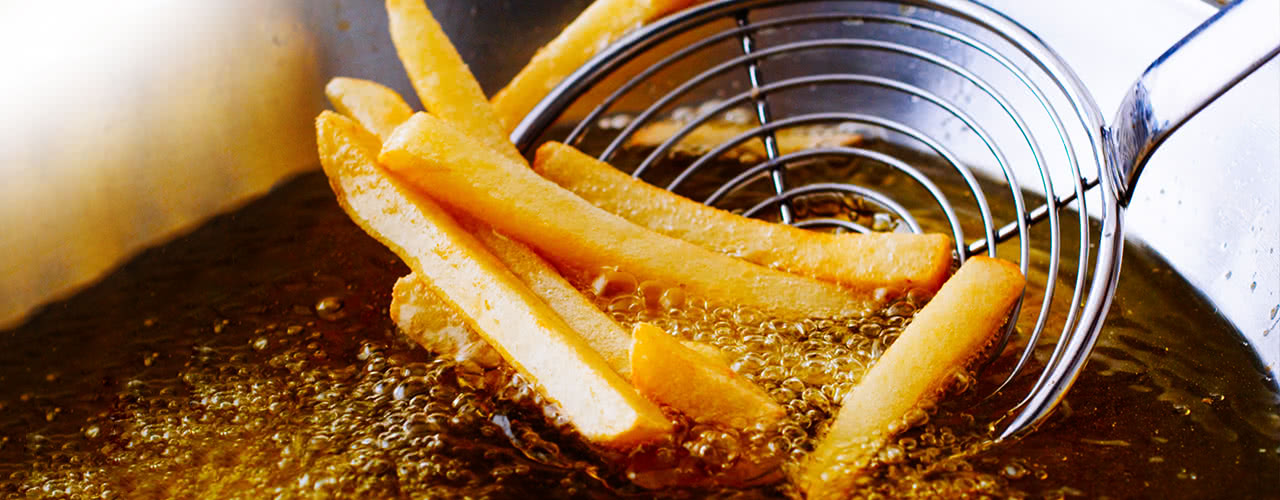Is Reusing Frying Oil Safe?
Is reusing frying oil safe?How many times can I keep reusing it until it goes bad? Can I reuse oil until it becomes dark and somewhat bubbly? I bet many people would ask the same questions. Read on to know if its safe to reuse frying oil.
Is reusing frying oil safe?How many times can I keep reusing it until it goes bad? Can I reuse oil until it becomes dark and somewhat bubbly? I bet many people would ask the same questions. Read on to know if its safe to reuse frying oil.
The answer is yes, you can reuse it. Using fresh oil every time you cook is the healthiest option. However, if that is not a viable option and it must be re-used, here are some helpful (and healthful) tips:
·Strain it through a few layers of cheesecloth to catch any food particles before storing. Be careful with hot oil, though, because you can easily get burned.
·Shake off excess batter from food before frying it.
·Use a good thermometer to fry foods at a maximum of 375°F (or 190°C).
·Turn off the heat after you are done the cooking. Exposing oil to prolonged heat accelerates rancidity.
·Do not mix different types of oil.
·Store oil in a cool, dark place.
·Avoid iron or copper pots or pans for frying oil that is to be reused. These metals also accelerate rancidity.
Oil's freshness largely affects its hydrophobic nature. We all know that oil and water don't want to mix, and this is one of the reasons deep-frying works so effectively. You can submerge a piece of food in a pot of hot oil and not much oil will get absorbed—at least, not until enough moisture has been driven out of the food.
Eventually, as this breakdown continues, your oil becomes less and less hydrophobic, and eventually, it'll start entering your food too rapidly, causing it to turn greasy and ruining its crispness.
At this stage, your oil needs to be replaced. Some telltale signs of old oil are foam on the top surface, an inability to reach frying temperatures without smoking, and a dark, dirty look and musty, fishy aroma.
Storage
Oil can break down even without the energy of a burner underneath it. It is the largest enemies? Humidity, light, and heat. You all have at least one friend who stores their oil right above the stove or perhaps even sitting in a bottle against the backsplash. They are no-good, dirty rotten oil-killers and I urge you to de-friend them immediately. Oils—even those that have been used a few times—should all be kept in tightly sealed containers in a cool, dark place.
How to Clean Oil
So you've cooked off that batch of fries, now you want to store the oil for future use. How do you do that? Start by using a skimmer to skim off any floaters and large pieces of debris that might be lurking in the pot and discard them. Next, pour the oil through a fine mesh strainer into a clean, dry pot. If you were cooking flour-dredged foods, you may find a large layer of dirty, flour-filled oil at the bottom of the pot. Stop pouring before you pour this stuff through and discard it separately. Cover the pot with the strained oil to prevent dust from falling int, and let it cool completely. Finally, use a funnel to pour the oil back into its original container (you did save it, right?). Seal it tightly, and store the oil in a cool, dry place.
Reference
<https://www.seriouseats.com/2013/09/ask-the-food-lab-how-many-times-can-i-reuse-fry-oil.html>
<https://goaskalice.columbia.edu/answered-questions/reusing-cooking-oil-safe>
Search
Categories
Popular Posts




















Comments: 0
No comments